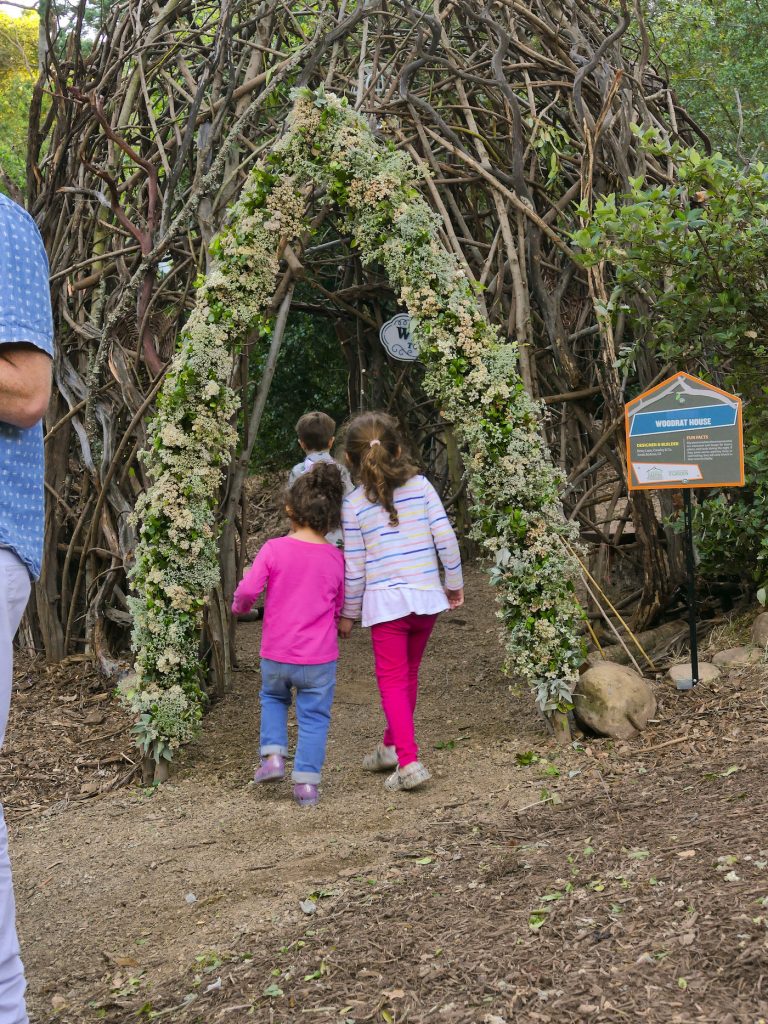The Santa Barbara Botanic Garden

Since being established in 1926, the Santa Barbara Botanic Garden (SBBG), has become a pillar of our community. Whether it was one of the garden’s many school programs, or just a visit with the family, many of us have childhood memories of the space. From the majestic redwood grove to the sprawling meadow, these enchanting gardens have captured the imaginations of both child and adult. And with their Garden Casitas: Playhouses Designed with Nature in Mind project, the SBBG hopes to bring new inspiration to children of all ages and provide family fun for the whole day.
Of course the SBBG has a long history of thinking forward and giving back to the community. Since its origins the SBBG has focused on preservation and California-native plants. At the time that it was being built, a botanic garden designed to look like nature and celebrate conservation was an avant garde concept. Botanic gardens during that era were more focused on sculpted features like topiaries and using plants as decor. Today, the SBBG has been celebrated for its conservation, even being certified as a “living museum.” As a nonprofit the SBBG has given back to the community through countless school programs and they even offer extensive educational programs for adults. In their California Naturalist Program, amateur naturalists, curious biologists, or even future docents are trained for ten weeks in local resource conservation, education and restoration.
While most of us associate the gardens with dog walking and school programs, they have been a research facility for many years. This service vastly expanded when they established the Pritzlaff Conservation Center in 2016. The building has a 1000 sq ft of research space split between two labs, including a 440 sq ft genetics and molecular research lab. The SBBG also oversees the important role of housing a seed bank with 175,000 seeds from California’s native plants, and an herbarium that stores over 150,000 preserved plant pressings of original botanical samples, with some pressings dating back to the 1800’s. These important specimens are kept in a state-of-the-art vault with climate control and backup power generators. The entire building incorporates green design and progressive technologies, and has even been LEED, or Leadership in Energy and Environmental Design, certified.
Housing New Ideas
For the Garden Casitas: Playhouses Designed with Nature in Mind project, the SBBG partnered with local architects, designers, and creatives to craft six child-sized abodes to be placed around the garden. Each six of these little garden dwellings complement their surroundings while adding fun and play into each area. With rope ladders, crawlspaces and benches, “Cali-Pop” by Designer/Builder Philip B. Gann allows children of all ages to play with each other, as well as their imagination. One of the more intricate pieces is “Rings of Time”, designed by Marc Whitman, AIA, Whitman Architectural and built by Tara Saylor, Taft Gardens & Nature Preserve Manager, has layers of wood and curved frill that give it a wild island feel, as if it was illustrated by Maurice Sendak. “Halfling House” was designed and built by Matthew Scranton with Frank Schipper Construction Co. as the project manager. The baby blue building has a small door leading into an immersive interior, perfectly sized for both small kids and adult hobbits.
In the “Big-eared Woodrat House” by Designer/Builder Kathryn Lape,Crowley & Co, wood branches are woven into an expansive den for kids to play in. The Santa Barbara Botanic Garden Volunteers even designed and built a piece, “The Hives,” for the garden. Blocks of redwood were built into an almost chiminea-like form with foot holds that allow children to climb and crawl around the structures. “Understory,” designed and built by Akiko Wade Davis, AIA, Wade Davis Design, tells of the relationship between the redwoods and undergrowth with long poles of timber jutting out to give this piece the looming strength of a childhood fort.
Each of these six dwellings asks families to play with the gardens in a new way. These creative playhouses will be up until at least February 2020 so there is still time to bring the family for a day full of play and picnics set among these enchanting gardens.







